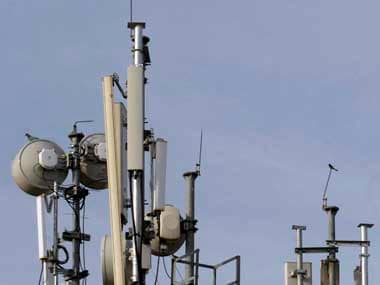The Union cabinet’s decision to keep the reserve price for 3G spectrum at Rs 3,705 crore per Mhz in the 2,100 Mhz band for auctions scheduled to begin on 4 March is probably the right call. One says probably because no one can predict where prices will go in an auction, or whether the reserve prices are too high or too low. The new reserve price is 35 percent higher than what the Telecom Regulatory Authority of India (Trai) had recommended - which Rs 2,720 crore per Mhz. The Telecom Commission recommended a raise, and this is what the cabinet has now approved. Predictably, the telecom industry is miffed, with Rajan Mathews, Director-General of the Cellular Operators Association of India (COAI), saying that the Trai price was more reasonable and the higher reserve price would inevitably lead to higher tariffs, reports The Economic Times. [caption id=“attachment_2069915” align=“alignleft” width=“380”]  Costlier spectrum. Reuters[/caption] A few weeks earlier, the cabinet had approved base prices of Rs 3,646 crore per Mhz of 800 Mhz spectrum, Rs 3,980 crore for 900 Mhz, and Rs 2,191 crore for one Mhz of all-India spectrum in the 1,800 Mhz band. Competition is expected to be keen as spectrum licences for Bharti Airtel are expiring in six circles, for Idea in nine, and for Vodafone and Reliance Communications in seven circles each this year. All of them would want to retain their hold on the versatile 900 Mhz band as far as possible. New players in broadband, like Reliance Industries, could also seek extra spectrum for various voice and data services, or to grab prime bands like 800 Mhz and 900 Mhz from the incumbents. The available spectrum in the 2,100 Mhz band is small - 5 Mhz, with 15 Mhz more promised when defence releases them – which could make bidding in this band sharper. It is possible that the higher reserve/base prices have been prompted by non-tax revenue considerations, given the stiff fiscal deficit target of 4.1 percent this year. But even if this were the case, it would merely be a right decision taken for the wrong reason. Of the Rs 80,000-1,00,000 crore expected from a successful auction, Rs 25,000 crore could come in this financial year itself. Arun Jaitley will be happy to get this money in the till when tax revenues are sluggish. However, it is time India’s telecom industry accepted the reality that spectrum is a super-scarce resource and that it cannot ever come cheap. Their business models and profitability cannot be built on the presumption that underpriced spectrum will be offered in plenty when the resource is actually going to get scarcer in the coming years, given our voracious appetite for broadband services. India has barely scratched the surface of broadband demand, and usage is going to head for the stratosphere with plans for a Digital India being a key driver. Here are three reasons why spectrum will always be costly in India and why telcos had better understand the reality. First, Indian has 1.25 billion potential telecom users crammed into a very small geographical area. The US has three times the geographical area and one-fourth the population of India. This automatically means spectrum must be used super efficiently in India. High prices will pressure telcos to avoid spectrum hoarding and use better technology to pump more data through the same available spectrum. Second, India, as a late starter in mass telephony, is over-dependent on wireless services as opposed to fixed-line telephony. While the decline in the wirelines is a worldwide phenomenon, India has had a very poor legacy of landlines. Hence our dependence on wireless telephony is very high – and growing in leaps and bounds. Of the nearly one billion telephone connections in India, barely three percent will be wireline. The worldwide the proportion of wireline to wireless telephony is falling dramatically, thanks to the proliferation of mobiles and hand-held devices, the pressure of spectrum will always increase, and more so in India which never expanded much into fixed telephony. Third, the spectrum prices cleared by cabinet are for the next 20 years. Assuming that the number of uses for spectrum will only rise exponentially as the country gets richer, with data trumping voice usage, the higher tariffs from pricey spectrum can easily be absorbed by the higher spectrum usage in data – especially in the second half of the licence years. In fact, voice will probably become nearly free in due course as data traffic trumps voice in the coming decade. The only valid reason for keeping spectrum prices steady is that usage is time-sensitive: unlike coal, which can be mined this year or five years later depending on prices and demand, spectrum not used this year is spectrum wasted. However, this makes out a case for flexible pricing and spectrum leasing, not lower reserve prices overall. What the government can, and should do, is allow spectrum leasing, spectrum mortgage and easy sale of spectrum between parties, apart from allowing easier mergers between viable and unviable telcos. But, as I have argued before, there is no real case of going cheap on spectrum pricing.
The Modi government has fixed a higher base price for 3G spectrum in the forthcoming auctions. Spectrum will never be sold cheap in India ever, and it is time telcos modified their business models to reflect this reality.
Advertisement
End of Article
Written by R Jagannathan
R Jagannathan is the Editor-in-Chief of Firstpost. see more


)

)
)
)
)
)
)
)
)



